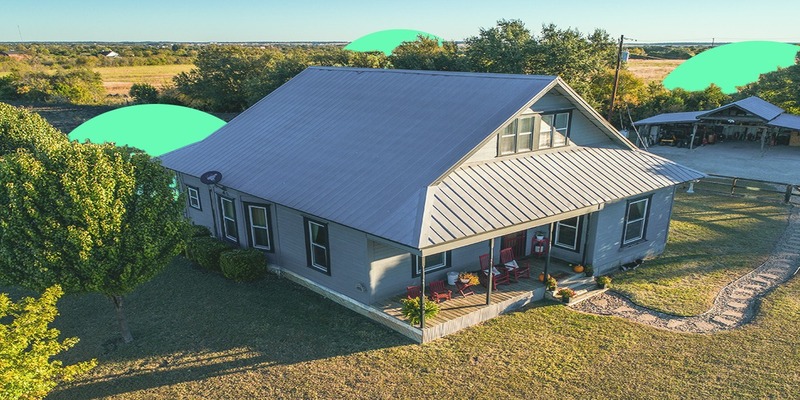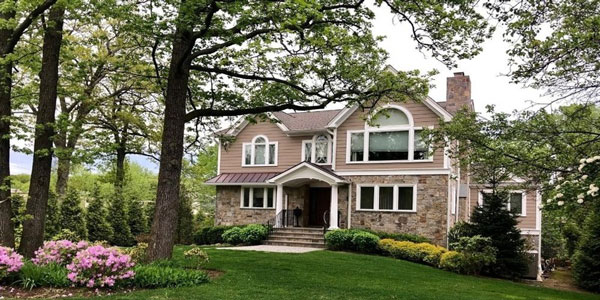By factoring in the cost of taxes and insurance, the USDA loan calculator may offer you a more accurate picture of your monthly mortgage payment if you decide to finance your home purchase via the USDA.
This calculator is tailored to reflect the specific advantages and disadvantages of obtaining a USDA loan compared to other available mortgage choices.
Unlike conventional mortgages, USDA loans don't need a down payment or PMI. On the other hand, USDA loans include a guaranteed charge up front and an annual fee, both of which are reflected in your cost estimates.
Exactly How Does A USDA Loan Function?

When a mortgage is "backed," the lender is given insurance. In the event of a USDA loan default, the USDA will insure the loan against significant loss.
When a borrower has this form of protection, the lending institution can offer them a lower interest rate with no down payment. This works toward the objective of the USDA to increase the number of rural low-income purchasers who own their homes.
USDA-Eligible Locations
There is a perception that USDA's location criteria need to be tight. Obviously, only some people dream of living in the country. However, the USDA's definition of "rural" is somewhat vague.
The USDA defines a rural region as consisting of less than 10,000 people. This accounts for around 97% of the United States. Both suburban and rural areas have plenty of suitable communities. It's a good idea to research USDA eligibility if you're looking to buy outside of a large city.
Costs And Explanations For A USDA Mortgage Calculator

Costs for both conventional mortgages and USDA loans are broken down in the linked calculator. Yet many purchasers need to know the rationale behind each surcharge. The breakdown of all prices is shown below.
Cost of Housing
A property's price is the sum you have agreed to pay for it. The asking price of a house is sometimes different from the final sales price. The price at which you acquire a house is negotiable between you and the seller.
Capital and Interest
What percentage of your monthly payment goes toward principal and interest? With a fixed-rate loan, this won't change throughout the loan's duration. Mortgage payments consist of more than just interest and principle. Other expenses, such as taxes and insurance, are also included in each monthly installment.
The Tax on Real Estate
The annual real estate tax is set by the county or municipality where the house is located. This fee is being collected with your regular mortgage payments over 12 months. If you fail to pay your property taxes, the county has the right to take your house, which would result in a financial loss for your lender. This calculator uses average data from tax-rates.org to predict annual property tax payments.
Proprietor's Insurance
Mortgage providers necessitate that homeowners have fire and other damage coverage on their properties. This charge is included in your regular monthly mortgage payment. In subsequent years, the lender will remit the premium payment to the insurance provider on your behalf. Once you have paid off your mortgage, you will need to begin making payments straight to your homeowner's insurance company.
HOA/other
Homeowners Association (HOA) dues may be required if you purchase a condo or house in a Planned Unit Development (PUD). This expense is included in the debt-to-income ratio that lenders use to make lending decisions. You can add items like flood insurance premiums and homeowner's association dues here, but please leave out utilities and repair bills.
One-time USDA charge
The USDA guarantee fee is added to the loan amount upfront. The current charge percentage is 1% of the loan principal. The charge helps cover the overhead associated with the USDA loan program.
Due in part to this charge, the agency can provide these loans at competitive interest rates and with low initial down payments. Although VA loans don't require monthly mortgage insurance, their upfront funding price is more than this.
Conclusion
USDA loans are available to anyone purchasing a home in a rural area. Low-interest rates and a 0% down payment option make this a good alternative for individuals with limited financial resources. There are fewer restrictions on who may qualify for a loan. USDA loans are designed for those with a modest income but a solid credit history.
However, it may be difficult to identify the ideal location given the requirement that participation is confined to rural regions as defined by the USDA. It might not be feasible if you have secure employment in the city. In addition, second residences and rental properties are not eligible for USDA loans.











